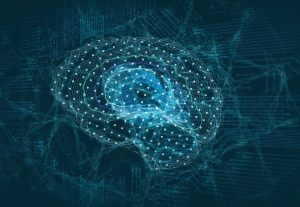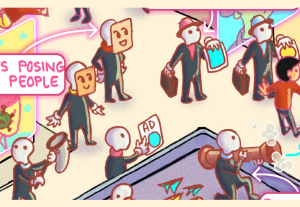- Accessibility, Artificial Intelligence, Behavioral Science, Customer Experience, Design, Design Theory, Remote Research, Research Methods and Techniques, Research Tools and Software, Technology, Usability, UX Education, UX Magazine
With ML facing so many users, there is a case to approach the conception and design of ML-powered applications from a UX research perspective. Read more to find out.
- The article covers the conception and design of ML-powered applications from a UX research perspective.
- The author unpacks the following ideas:
- Machine Learning and Real Users
- Machine Learning and The Theory of Machine
- Mental Models and User Engagement with Machine Learning Apps
Share this link
- September 21, 2022

- Accessibility, Customer Experience, Design, Empathy, Human factors, Technology, Technology for the Common Good, Usability, UX Education, UX Magazine
Tips on how to design for the blind.
The author explains how to design for people using Assistive Technologies and offers 5 tips.
Share this link
- September 15, 2022

- Accessibility, Behavioral Science, Customer Experience, Design, Design Theory, Healthcare, Human factors, Psychology and Human Behavior, Technology, Things UX People Like, Usability, UX Education, UX Magazine
Technology dependency, a shortening of the attention span and the overwhelming feeling of being always on in todays society are some of the matters we need to solve in our relationship with the Internet. We are here to create valuable, relevant experiences and it seems that it is more needed than ever.
- The Internet has helped us advance significantly in various directions but it also shortened our attention span and gave us the overwhelming feeling of being always on.
- The author brings up the problem of the Internet impact on people’s lives and believes bad design to be the reason.
- The author considers Netflix losing subscribers and Disney+’s Obi-Wan Kenobi not getting the expected iMDB score good examples of bad UX design.
- The problem of being overwhelmed, dependent on technology and even bigger problems like the depression it can cause can be solved by focussing on good user experience design.
Share this link
- August 16, 2022

- Accessibility, Augmented Reality, Cloud Computing, Customer Experience, Defining AI, Design, Design Theory, Development, Neurology, Neuroscience, Technology, Technology for the Common Good, Usability, UX Education, UX Magazine
The emergence of privacy risks and data ownership opportunities as we augment the brain.
- Brain-computer interfaces (BCIs) are interfaces for recording and processing neurological data and turning these data into an output.
- Neurodata can be directly recorded, e.g., by a BCI, or indirectly recorded, e.g., an individual’s spinal cord.
- There are particular privacy risks associated with BCIs that might need the following solutions:
- Encryption
- Local-first software
- Separation of data and compute (or edge computing)
- Access control layer
- Data cooperative
Share this link
- July 28, 2022

- Artificial Intelligence, Augmented Reality, Customer Experience, Design, Design Theory, Storytelling, Technology, Usability, UX Education, UX Magazine
Using science fiction and futures to inform design decisions for the ‘metaverse’.
- “Eliza — The Ghost in Every Machine” is a weekly cartoon about a machine consciousness trying to understand our world, as it finds itself in increasingly prominent places every day. Eliza has over 50 cartoons now.
- Eliza shows us what interactions in the future might look like. Eliza is an effort in prototyping human-machine interactions through fiction.
- This article explores possible future interactions with the ‘metaverse’.
- The author believes that living a great chunk of our lives in an avatar-infested space is just escapism.
Share this link
- July 13, 2022

- Accessibility, Artificial Intelligence, Conversational Design, Customer Experience, Design, Interaction Design, Technology, Technology for the Common Good, Usability, UX Education, UX Magazine, Voice & Natural Language
Typing search queries is gradually becoming an outdated artifact of the past and voice tech is becoming more useful and promising by the day. So what other prospects await for voice tech and why is it so special? We’re about to find out!
- This article covers some essential voice search statistics, how people interact with voice interfaces, what can users do with voice and why startups should care about all of this.
- Typing search queries is gradually becoming an outdated artifact of the past.
- The author believes that the overwhelming consumer shift towards voice interfaces will inevitably lead to the mass adoption of this technology among startups.
- How to Design a Voice Interface?
- Pre-design Stage
- The Main Design (user research, customer journey mapping, VUI competitor analysis, gathering requirements, prototyping, usability testing)
Share this link
- July 5, 2022


